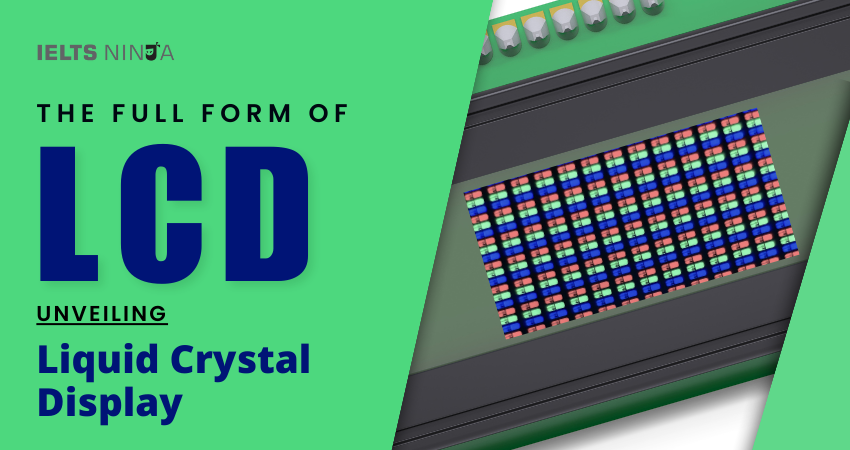In the world of visual displays, the full form of “LCD” stands as a ubiquitous acronym. LCD, which stands for Liquid Crystal Display, is a technology that has revolutionized the way we view information and imagery on electronic screens. In this comprehensive guide, we will explore the details of LCD, its workings, and its widespread applications in modern technology.
What is an LCD?
LCD, or “Liquid Crystal Display”, है a flat-panel display technology that utilizes the unique optical properties of liquid crystals to produce images and text on screens. It is commonly used in various electronic devices, including televisions, computer monitors, smartphones, and digital clocks.
How LCD Works
The operation of an LCD is based on the manipulation of liquid crystals placed between two layers of transparent electrodes. Here’s a simplified explanation of how it works:
Liquid Crystals:
Liquid crystals are substances that have properties of both liquids and solids. They can change their molecular arrangement when subjected to an electric field.
Polarized Light:
Two layers of polarized glass are positioned on either side of the liquid crystal layer. Polarized light passes through the first layer and enters the liquid crystals.
Electric Field:
When an electric field is applied to specific segments of the liquid crystal layer, it alters the alignment of the liquid crystal molecules. This change in alignment affects the passage of light through the layer.
Controlled Light:
The altered arrangement of liquid crystals selectively allows or blocks the passage of light. This controlled light creates the patterns and colors that form images on the screen.
Advantages of LCD
LCD technology offers several advantages that have contributed to its widespread adoption:
- Sharp Image Quality: LCD screens typically produce sharp, high-quality images with vibrant colors.
- ऊर्जा दक्षता: LCDs consume less power compared to older display technologies like CRT (Cathode Ray Tube), making them more energy-efficient.
- Thin and Lightweight: LCDs are thin and lightweight, allowing for slim and portable devices.
- Wide Range of Sizes: LCDs are available in various sizes, from small smartphone screens to large television displays.
- Reduced Flicker: LCDs have reduced flicker compared to older display technologies, which is easier on the eyes during prolonged use.
यह भी पढ़ें: सर्वश्रेष्ठ ऑनलाइन आईईएलटीएस कोचिंग एवं प्रशिक्षण अकादमी
Applications of LCD
LCD technology is integral to numerous applications across various industries:
- Consumer Electronics: LCDs are commonly used in televisions, computer monitors, laptops, tablets, and smartphones.
- Information Displays: LCDs are used in digital signage, information kiosks, and public transportation displays to provide information to the public.
- Medical Devices: LCDs are employed in medical equipment such as ultrasound machines, patient monitors, and diagnostic devices.
- Automotive Displays: LCD screens are found in car navigation systems, entertainment systems, and instrument clusters
- Industrial Control: LCDs are used in industrial control panels and machines to provide visual feedback and interface with machinery.
Evolution of LCD
LCD technology has evolved over the years to offer improved performance and features. This includes advancements like LED backlighting, which enhances brightness and energy efficiency, and the development of OLED (Organic Light-Emitting Diode) displays, known for their vivid colors and flexibility.
निष्कर्ष
Liquid Crystal Display (LCD) technology has become an integral part of our daily lives, powering the screens of devices we use for work, entertainment, and communication. Its ability to produce sharp, energy-efficient, and versatile displays has made it a cornerstone of modern technology.
As LCD technology continues to evolve and diversify, it will likely remain a key player in the world of visual displays, driving innovation and enhancing our visual experiences across various industries.








